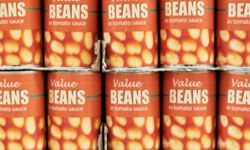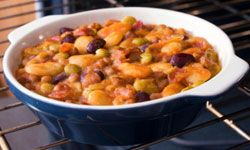In modern culture, beans are often synonymous with "nothing." But this often-overlooked pantry staple is a powerful source of nutrition. Beans bring plenty of good stuff to the table, including fiber, iron and other minerals and vitamins. Beans also pack enough protein to be an economical stand-in for meat.
Beans aren't just good for us; they're good for the earth, too. Wherever beans grow, they build up nitrogen in the soil, making this nutrient available for the next crop that grows there.
Advertisement
Fortunately, since we can't wait that long for a meal, bean farmers make it easy for us by canning this valuable produce. All that goodness, precooked and ready to use, can be ours with a simple spin of the can opener, and beans can have a starring role in everything from appetizers to desserts. Try one -- or all 10 -- of these delicious uses for canned beans.



